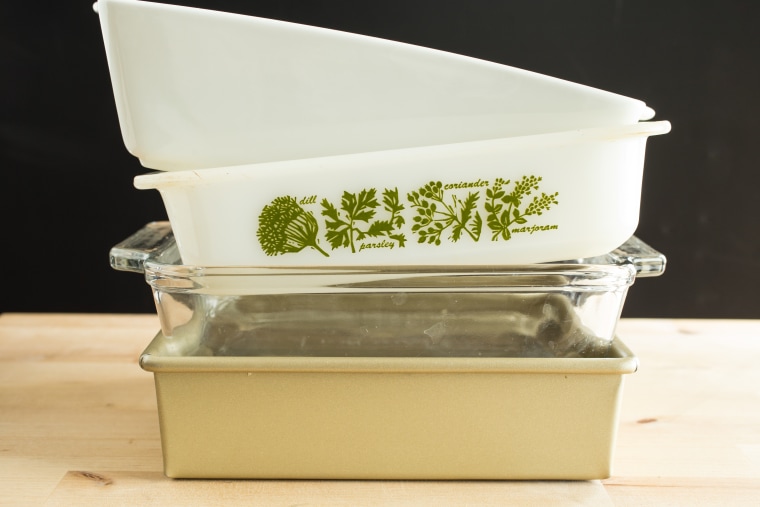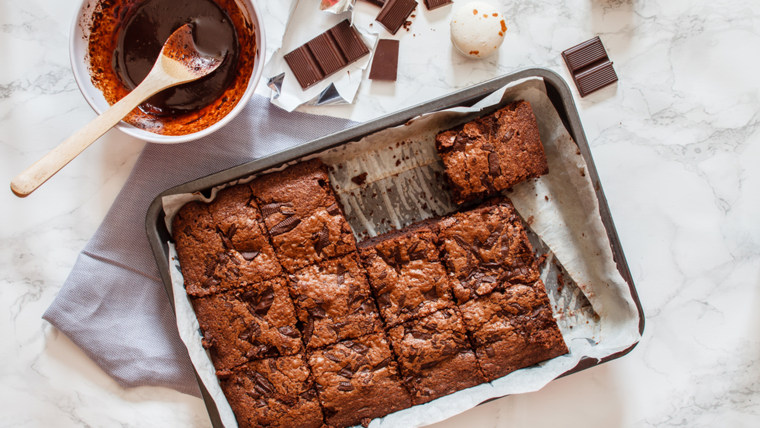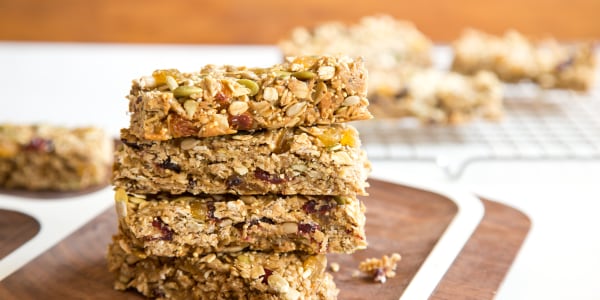From brownies and cobblers to baked beans and casseroles, the basic baking pan is the multitasking master of the kitchen. Its simple square (or rectangular) shape is ideal for cooking a multitude of dishes. But chances are you've got a whole lot of these pans stacked in your cupboard: retro glass pans, industrial metal pans, French ceramic pans and other decorative finishes. Which pan should you use for your recipe? Does it even matter?

As Kathy Strahs, author of “The 8x8 Cookbook,” explains, "It all depends on what you're planning to bake and how you're planning to serve it." Here's how to make the right choice for what you're bringing to the table or bake sale.
RELATED: 6 myths about cast iron pans busted
Ceramic
If you'll be serving your food directly from the oven to the table, it's time to bust out your most beautiful ceramic bakeware—there's a reason why those rustic Le Creuset casserole dishes end up on everyone's wedding registries. Functionally, ceramic pans are best when making casseroles and other dishes that need to stay warm for longer periods of time; think lasagna or stuffed shells for a buffet, or baked beans for a potluck picnic.
RELATED: 18 casserole recipes that'll keep the whole family full and happy
Best for:
- Potato gratin
- Casseroles
- Bread pudding
- Stuffing
- Baked dips like spinach-artichoke dip
Glass
Glass is actually a variety of ceramic cookware—it's silica-based instead of clay-based—and so shares a lot of the same heating and insulating properties. If you're using vintage Pyrex bakeware, certain glass designs can be just as pretty, presentation-wise. Foods baked in glass bakeware won't brown as much on the bottom and sides as they will in a metal pan; baked oatmeal and egg dishes will come out evenly and gently cooked, but stuffing or dough crusts won't have deeply crispy edges.
Best for:
- Baked mashed potatoes and vegetable purees
- Fruit cobblers
- Baked or roasted fish
Metal

For heat conduction and delectably crispy browning, a metal pan is the best move. Brownies will have chewier, fudgier edges when baked in a metal pan, and roasted meats like chicken and pork chops will be sizzling and golden brown on all sides. If you have an uncoated aluminum pan, stay away from using it to bake dishes with tomato sauce and other acidic foods like wine, since they will discolor the pan.
Best for:
- Bar cookies and homemade granola bars
- Brownies
- Deep dish pizza and other meals with a dough crust
- Roasted vegetables like Brussels sprouts
Remember!
Never put a metal baking pan in the microwave. And unless the manufacturer's instructions specifically state otherwise, glass and ceramic are not safe for stovetop (direct-heat) cooking—they can crack or shatter. Because glass and ceramic retain heat for a long period of time, make sure they cool down before immersing them in cold water or placing them in the freezer.
